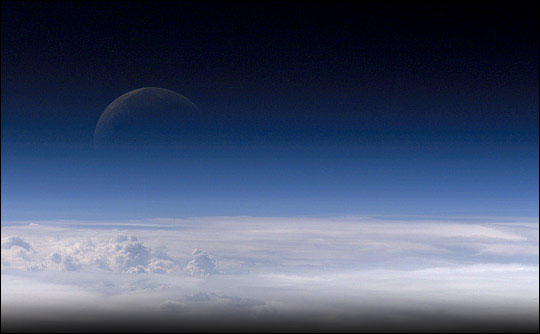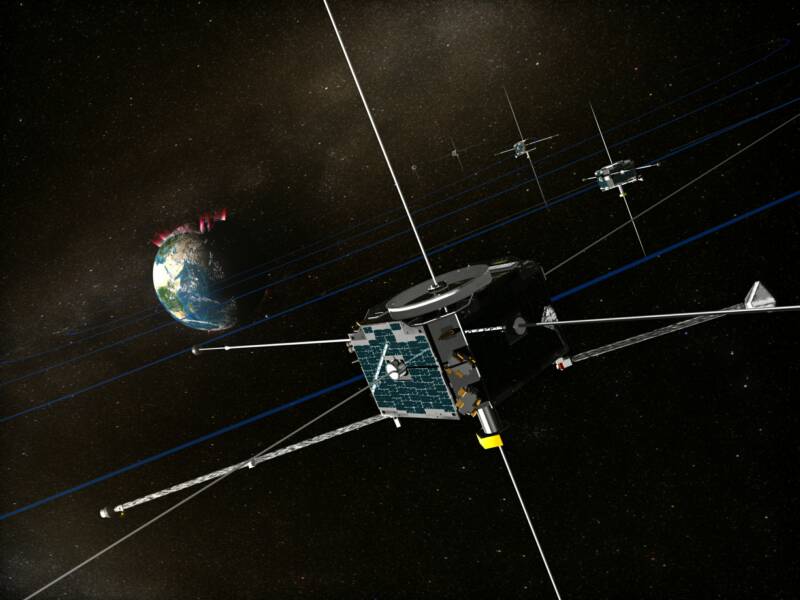 THEMIS was originally scheduled to launch on 19 October 2006. Owing to delays caused by workmanship problems with Delta II second stages -- an issue that also affected the previous mission, STEREO -- the THEMIS launch was delayed to Thursday, February 15, 2007. Due to weather conditions occurring on Tuesday, February 13th, fueling of the second stage was delayed, and the launch pushed back 24 hours. On February 16, the launch was scrubbed in a hold at the T-4 minute point in the countdown due to the final weather balloon reporting a red, or nogo condition for upper level winds. A 24-hour turnaround procedure was initiated, targeting a new launch window between 23:01 and 23:17 GMT on 17 February.
THEMIS was originally scheduled to launch on 19 October 2006. Owing to delays caused by workmanship problems with Delta II second stages -- an issue that also affected the previous mission, STEREO -- the THEMIS launch was delayed to Thursday, February 15, 2007. Due to weather conditions occurring on Tuesday, February 13th, fueling of the second stage was delayed, and the launch pushed back 24 hours. On February 16, the launch was scrubbed in a hold at the T-4 minute point in the countdown due to the final weather balloon reporting a red, or nogo condition for upper level winds. A 24-hour turnaround procedure was initiated, targeting a new launch window between 23:01 and 23:17 GMT on 17 February.
The launch of THEMIS Favourable weather conditions were observed on 17 February, and the countdown proceeded smoothly. THEMIS successfully launched at 6:01 p.m. EST. The spacecraft separated from the launch vehicle approximately 73 minutes after liftoff. By 8:07 p.m. EST, mission operators at the University of California, Berkeley, commanded and received signals from all five spacecraft, confirming nominal separation status.
The launch service was provided by the United Launch Alliance through NASA Launch Services Program (LSP).
Instruments
This illustration depicts the individual orbits of NASA's THEMIS spacecraftAboard the spacecraft:
Instrument Data Processing Unit (IDPU): The IDPU houses most of the electronics for the instruments on the THEMIS spacacraft.
Electric Field Instruments (EFI): The EFI is designed and built to sense the electric field in Earth's ever-changing magnetosphere
Flux Gate Magnetometer (FGM): The FGM measures the background magnetic field to identify and time the abrupt reconfigurations of the magnetosphere during substorm onset.
Search Coil Magnetometers (SCM): The SCM measures low frequency magnetic field fluctuations and waves in three directions in Earth's magnetoshpere.
Electrostatic Analyzer (ESA): The ESA measures thermal electrons and ions to identify and track high-speed flows through the magnetotail and identify pressure pulses.
Solid State Telescope (SST): The SST measures particle distribution functions.
Ground based:
As the satellites monitor the magnetosphere from orbit, twenty ground stations in North America simultaneously monitor auroras. Ground station mission and science operations are being managed by the University of California Space Sciences Laboratory.
Ground-Based All-Sky Imager (ASI) Array: The ground-based All-Sky Imager (ASI) array observes the aurora over the Northern American continent from Canada to Alaska in order to determine where and when the auroral substorm onset occurs.
Ground-Based Magnetometer (GMAG) Array: The GMAG Measure changes in Earth’s magnetic field near Earth’s surface due to substorm onset to help determine the timing of substorm events.





